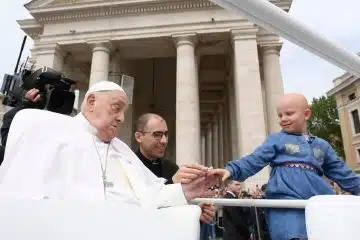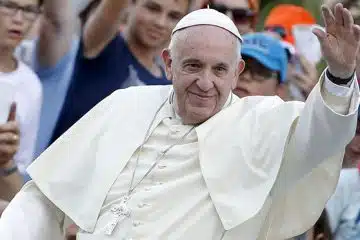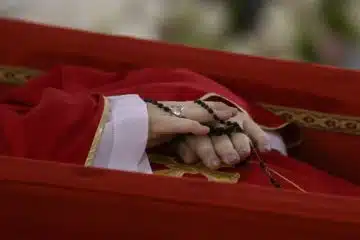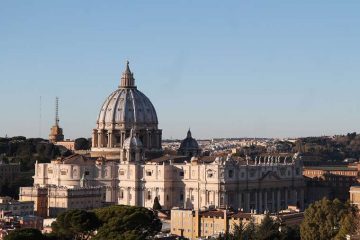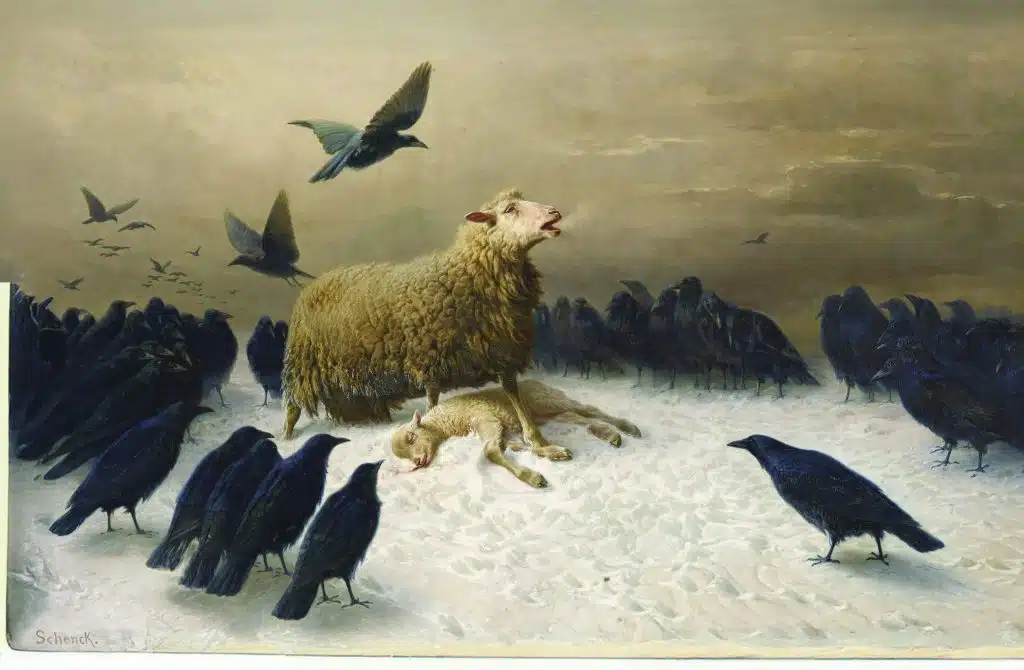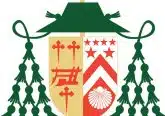Anguish & Joy

In a visually saturated world, it’s easy to feel overwhelmed and become desensitized to beauty. Visio Divina, Latin for “divine seeing,” encourages us to slow down and engage in visual contemplation, using art as a profound tool for connecting with the Divine.
A Guide to Visio Divina
Begin by making the sign of the cross and inviting the Holy Spirit to guide your contemplation. Spend a moment meditating on Anguish, ca. 1878 (Realism period) by August Friedrich Schenck, located at The National Gallery of Victoria, Melbourne.
Background
Born in 1828, Danish painter Schenck moved to Paris to study at the École des Beaux-Arts, and by 1857, he was exhibiting at the prestigious Paris Salon. He excelled at painting landscapes and animals, but many of his works carried a melancholic theme, tackling concepts of death, fear and isolation. He developed a particular interest in painting sheep, often depicting them in dramatic scenes that conveyed deep human emotion. Little is known about his personal life—not even his religious background—yet his paintings express profound Christian themes and symbolism.
Animals have long been used in literature and visual art as metaphors to reflect the human experience and psyche. The 19th century was particularly rich in animal imagery, coinciding with the publication of Charles Darwin’s The Expression of the Emotions in Man and Animals (1872), which explored the idea that animals, much like humans, experience complex emotions and familial bonds. The themes of death, dying and grief were prevalent during the 19th century due to poor sanitation and widespread disease, as well as Queen Victoria’s extended mourning for her husband, Prince Albert.
Enter In
Wandering a little too far from its mother, a lamb panics, realizing it is alone and in danger. A menacing black bird lands before him, tilting its head as it watches. It lets out a sharp caw, which is soon met with an echoing response. In an instant, a flurry of dark wings descends upon the snow. Terrified, the lamb stumbles backward, bleating for its mother.
Hearing her lamb’s cry, the ewe rushes in fear to find him. She arrives to a horrific scene thrashing wings, pecking beaks and clawing talons. Darkness envelopes her child. With a desperate bleat, she barrels through the swarm of crows, fighting to save her lamb. But it’s too late.
The lamb succumbs, its small body falling limp as blood trickles from its mouth, staining the snow. The ewe cries out in despair, her breath unfurling in the frigid air as she protectively stands over her lifeless child. It is quiet now, except for the soft rustle of feathers. The crows remain still, huddled around their cruel deed, watching and waiting for the ewe to leave so they can feast on their prey.
Schenck’s Anguish is a gut-wrenching image. It can be challenging to look at and uncomfortable to sit with. Yet, this painting has a haunting pull on viewers, stirring deep emotion and unsettling curiosity, evoking a visceral response. Why does this image elicit such a powerful reaction?
Lamb and sheep motifs are prominently seen throughout the Bible. Lambs were often used as sacrificial offerings as atonement for sins, most notably seen in Exodus 12:1-14 and Isaiah 53:7 which point to the Old Covenant. In this painting, even though this lamb was attacked, it appears “without blemish” (echoing Exodus 12) except for the blood dribbling from its mouth.
John the Baptist was the first to refer to Jesus as the Lamb: “Behold, the Lamb of God, who takes away the sins of the world” (Jn. 1:29). Jesus Himself referred to His disciples as lambs: “Behold, I send you as lambs in the midst of wolves” (Mt. 10:16). But notice how John the Baptist doesn’t just call Jesus a lamb—he calls Him the Lamb of God.
Venerable Fulton Sheen emphasizes this point, “[Jesus] was neither the peoples’ lamb, nor the lamb of the Jews, nor the lamb of any human owner, but the Lamb of God.” Many Centuries earlier, St. Augustine of Hippo questioned, “If to be innocent is to be a lamb, then John was a lamb, for was not he innocent? But who is innocent? To what extent innocent?” The distinction in John’s reference to Jesus is crucial: He is not just any lamb but the Lamb of God. Jesus holds the unique role of sacrificial nature and divine purpose—a role that no other human or lamb could fulfill.
Looking back at Schenck’s painting, it makes sense to interpret the lamb as Jesus and the ewe as Mary, bringing to mind a familiar scene of sorrowful Mother and Child: Michelangelo’s Pieta. This makes the painting feel even more raw and heartbreaking.
What might the crows represent? In nature, crows are incredibly intelligent creatures. They can recognize faces, mimic voices and sounds, create tools and even leave gifts. They also display a sense of mourning, gathering when one of their own dies in what appears to be a kind of funeral. Despite their whimsical nature, crows are opportunistic omnivores, consuming almost anything—including small animals and sometimes livestock. In Anguish, Schenck captures this stark reality of nature, playing into the ominous term “a murder of crows.”
I interpret the crows as representing the sinful nature of humanity—or, in other words, us. Because of our sins, Christ endured the Cross, offering Himself as the final sacrificial Lamb for our salvation. The crows watching and waiting to eat the lamb is unsettling. However, if we are the crows and Jesus is the sacrificial lamb, then does this not evoke the Eucharist? During the Communion Rite at Mass, the priest raises the host above the chalice reciting, “Behold the Lamb of God, behold Him who takes away the sins of the world. Blessed are those called to the supper of the Lamb.” The priest’s words echo John the Baptist’s declaration from John 1:29, reaffirming the connection between Christ’s sacrifice and the Eucharist. The Lamb comes full circle here.
Reflection
Schenck’s Anguish is, in many ways, an Easter painting. At first glance, its cruel imagery may be unsettling, prompting questions like: How can beauty be found in something so horrific? Isn’t Easter about the hope and joy in the Resurrection? While this is true, Flannery O’Connor’s words come to mind: “The truth does not change according to our ability to stomach it.”
We mustn’t forget that Easter’s joy would not exist without the horrific sacrifice that came before it. Artwork like Schenck’s Anguish and depictions of the Crucifixion serve as powerful reminders that Christ’s Passion was both real and necessary. Through them, we can draw deeper into the truth of our salvation, finding hope and joy in the Eucharist—the ultimate fulfillment of the Lamb of God.
 Emma Cassani, [email protected], is the graphic designer behind The Catholic Telegraph. She is passionate in exploring the intersection between art and faith.
Emma Cassani, [email protected], is the graphic designer behind The Catholic Telegraph. She is passionate in exploring the intersection between art and faith.
This article appeared in the April 2025 edition of The Catholic Telegraph Magazine. For your complimentary subscription, click here.




